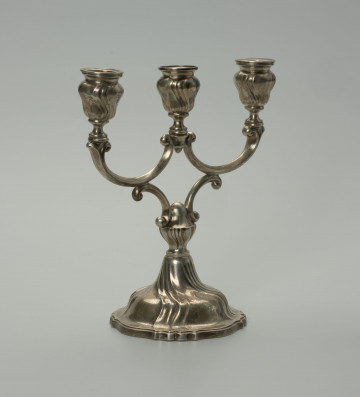
Chest
1796
National Museum in Szczecin
Part of the collection: Craft and industry products of Szczecin
The invention of the sewing machine was a milestone in the development of the garment industry. Sewing machines started being sold on a larger scale in the mid-19th century, thanks to Isaac Merritt Singer, who was the first to notice the need to make machines for household use. At that time, Bernhard Stoewer (1834-1908) – a mechanic and owner of a workshop in Gryfino – also began to manufacture his first sewing machines. The beginnings were quite difficult. Their devices were mostly unknown, and many potential buyers were deterred by its high price. The breakthrough came when an order was placed for the repair of one of the machines owned by the army stationed in Szczecin. Stoewer then decided to establish a sewing machine repair and construction workshop in the city. Since then, the company grew rather quickly, finding customers not only locally, but even abroad. Of the many sewing machines produced, the most popular was the VS III model mounted on two wide legs with decorative lattice work, with the surface of the tabletop decorated with a strip of geometric patterns resembling a scale, thanks to which it could serve as a measuring tape. In the aftermath of World War I, the production of machines declined. In 1931, Stoewer sold the sewing machine license to Adolf Knoch's in Saalfeld, which led him to stop their production in Szczecin.
Anna Lew-Machniak
Author / creator
Dimensions
cały obiekt: height: 45 cm, width: 90 cm
Object type
haus furnishing
Creation time / dating
Creation / finding place
Identification number
Location / status

1796
National Museum in Szczecin

1901 — 1939
National Museum in Szczecin

1901 — 1940
National Museum in Szczecin
DISCOVER this TOPIC
Castle Museum in Łańcut
DISCOVER this PATH
Educational path